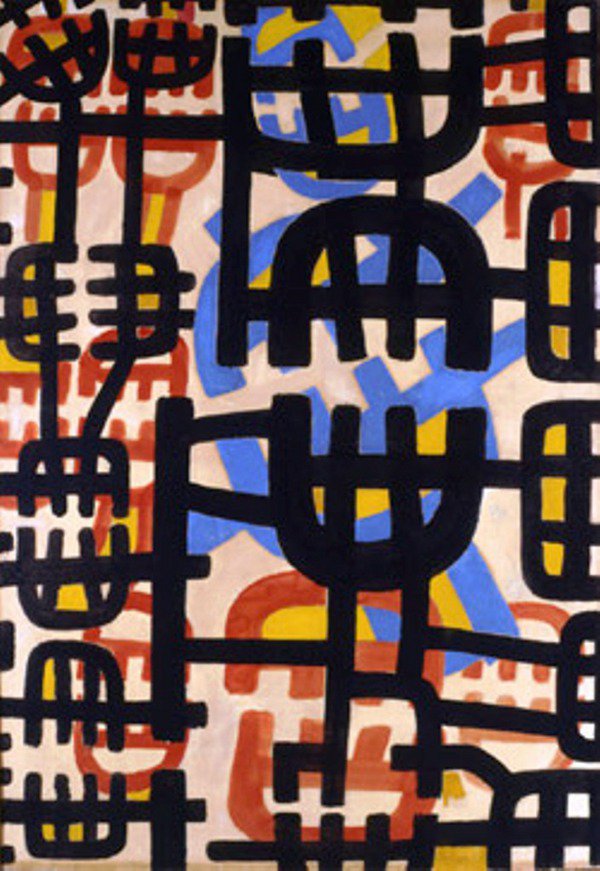Giuseppe Capogrossi
dal 5/11/2013 al 12/12/2013
Segnalato da
New York University, Casa Italiana Zerilli-Marimo
5/11/2013
Giuseppe Capogrossi
Casa Italiana Zerilli-Marimo', New York
The series of works presented in this exhibition documents the meticulous process that led Capogrossi from the original concept to the final version of a graphic work.

A new exhibition dedicated to Giuseppe Capogrossi, one of the brightest Italian artists of the 20th century.
Capogrossi, who was classically trained and even taught figure drawing at the Rome Art School, went through a troubled yet fascinating process that led him to fully embrace abstraction.
The series of works presented in this exhibit documents the meticulous process that led Capogrossi from the original concept to the final version of a graphic work.
Giuseppe Capogrossi was one of the Italian masters of abstract art of the second half of the 20th century. This marks the first exhibition of the master’s art in New York since the historic show at the Leo Castelli Gallery over fifty years ago.
Biography:
Giuseppe Capogrossi Guarna was born in Rome on March 7,1900. He attended the Jesuit Massimiliano Massimo high school and graduated in law from
Rome University in 1922 after serving in the World War I. In accordance with his long-standing artistic aspirations, he decided to pursue a career in painting rather than law and sought the advice of his uncle Pietro Tacchi Venturi, a distinguished Jesuit, who arranged for him to work in a studio specializing in works of religious art. In the summer of 1923, feeling the need to update his technique, he enrolled in Felice Carena’s more modern art school. He took part in the major Vatican Missionary Exhibition held at the behest of Pius XI in conjunction with the Holy Year of 1925 and then in shows held in Rome at the Pensione Dinesen and the Casa d’Arte Bragaglia in 1927. His training was completed with a series of trips to Paris, the first in 1928, which gave him first-hand knowledge of Impressionist and Cubist painting. He was selected to exhibit work in the 1930 Venice Biennial and featured with Corrado Cagli, Emanuele Cavalli and Ezio Sclavi in a group show at the Galerie Jacques Bonjean in Paris in December 1933. It was on this occasion that the critic Waldemar George used the expression école de Rome or Rome school to identify the style of the painters exhibited, which he saw as characterized by a modern vocabulary developed on the basis of the complex Italian artistic culture. Capogrossi met Costanza Mennyey, a painter of Hungarian origin, at the 1936 Venice Biennial and they embarked on a relationship that saw the birth of two daughters, Beatrice in 1938 and Olga in 1944. He showed work with marked success in the 1937 International Exhibition of Painting at the prestigious Carnegie Institute in Pittsburgh and obtained the post of teacher of figure drawing at the art school on Via Ripetta in Rome in 1940. He continued there until 1966, when he obtained a post at the Naples Academy of Fine Arts. Capogrossi went through a period of deep creative crisis in the late 1940s, during which he painted over and even destroyed paintings executed previously. His style altered, shifting initially toward Neo-Cubism and then the total abandonment of figurative painting with the definition of the comb-shaped sign that was to become the hallmark of his art. This new work was exhibited for the first time in 1950 in three different shows held at the Galleria del Secolo in Rome, the Galleria del Milione in Milan, and finally the Galleria del Cavallino of the well-known art dealer Carlo Cardazzo in Venice. While continuing to live in Rome, he founded the Origine group in Milan together with Alberto Burri, Mario Ballocco and Ettore Colla, and signed a contract for exclusive rights with Carlo Cardazzo, the owner of galleries in Milan and Venice. This marked the start of the circulation and sale of his work also outside Italy. Capogrossi’s works of this period are in line with the most advanced developments of the day in European and American painting. Michel Tapié included him in the historic show held in 1951 at the Galerie Nina Dausset in Paris alongside figures such as Jackson Pollock, Willem de Kooning, Hans Hartung, Georges Mathieu and Wols. It was on this occasion that Tapié coined the felicitous term art informel to define the style and characteristics of the pictorial language of the works exhibited. Capogrossi subsequently took part in major exhibitions in the United States, including the one organized by James Johnson Sweeney at the Solomon R. Guggenheim Museum, New York, in 1953–54 and Andrew Carnduff Ritchie’s historic touring show of 1955, as well as a solo show at the Leo Castelli Gallery, New York, in 1958. The 1960s saw increased participation in events at the national and international level, including various editions of the São Paulo Biennial and the Guggenheim International Award as well as shows in Japan, sometimes together with Lucio Fontana. Official Italian recognition of the importance of his work arrived in 1962, when he was awarded the City of Venice prize at the Venice Biennial and an entire room was devoted to his works, as it had been in 1954. The 1950s and ’60s also saw a considerable output of works on paper, lithographs and works of applied art like ceramics, jewelry, and tapestries. Giuseppe Capogrossi died in Rome on October 9, 1972.
Opening Nov 6th at 6pm
New York University, Casa Italiana Zerilli-Marimò
24 West 12th Street - New York, NY 10011
Mon-Fry 10am-5pm
Free entry



